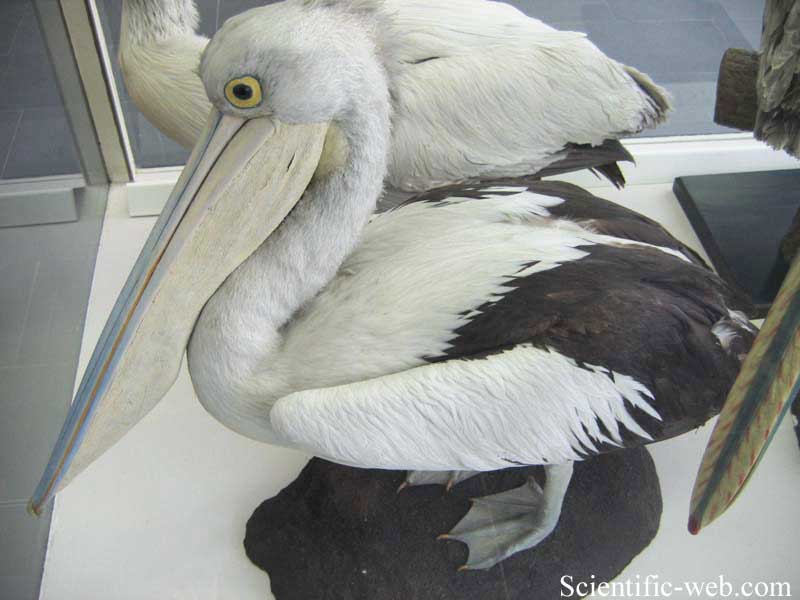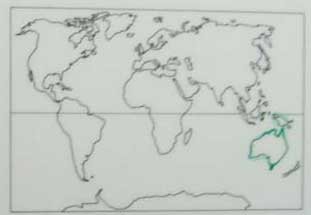Pelecanus conspicillatus, Photo: Michael Lahanas Cladus: Eukaryota
Name Pelecanus conspicillatus Temminck, 1824 Vernacular names
* Nouveau recueil de planches coloriées d'oiseaux livr.47 pl.276 The Australian Pelican (Pelecanus conspicillatus) is a large water bird, widespread on the inland and coastal waters of Australia and New Guinea, also in Fiji, parts of Indonesia and as a vagrant to New Zealand. Taxonomy The Australian Pelican was first described by Dutch naturalist Coenraad Jacob Temminck in 1824. Its specific epithet is derived from the Latin verb conspicere "to perceive", hence "conspicuous". Description The Australian Pelican is medium-sized by pelican standards: 1.6 to 1.8 m (5.3–6 ft) long with a wingspan of 2.3 to 2.5 m (7.6–8.3 ft) and weighing 4 to 13 kg (9–29 lb).[1][2] It is predominantly white with black along the primaries of the wings. The pale, pinkish bill is enormous, even by pelican standards, and is the largest bill in the avian world. The record-sized bill was 49 cm (19.5 in) long. Distribution and habitat Australian Pelicans prefer large expanses of open water without too much aquatic vegetation. The surrounding environment is unimportant: it can be forest, grassland, desert, estuarine mudflats, an ornamental city park, or industrial wasteland, provided only that there is open water able to support a sufficient supply of fish. Australian Pelicans follow no particular schedule of regular movement, simply following the availability of food supplies. When the normally barren Lake Eyre filled during 1974 to 1976, for example, only a handful of pelicans remained around the coastal cities: when the great inland lakes dried again, the population dispersed once more, flocks of thousands being seen on the northern coasts and some individuals reaching Christmas Island, Palau and New Zealand. The species became first known to occur in New Zealand from a specimen shot at Jerusalem in 1890 and small numbers of subfossil bones, the first found at Lake Grassmere in 1947, followed by records of other stray individuals. The bones were later described as a new (sub)species, Pelecanus (conspicillatus) novaezealandiae (Scarlett, 1966: "New Zealand Pelican") as they appeared to be larger, but Worthy (1998), reviewing new material, determined that they were not separable from the Australian population. These fossils were first found in 1930. Breeding
References 1. ^ Australian Animals — Pelican * BirdLife International (2004). Pelecanus conspicillatus. 2006. IUCN Red List of Threatened Species. IUCN 2006. www.iucnredlist.org. Retrieved on 12 May 2006. Database entry includes justification for why this species is of least concern. Source: Wikipedia, Wikispecies: All text is available under the terms of the GNU Free Documentation License |
|


